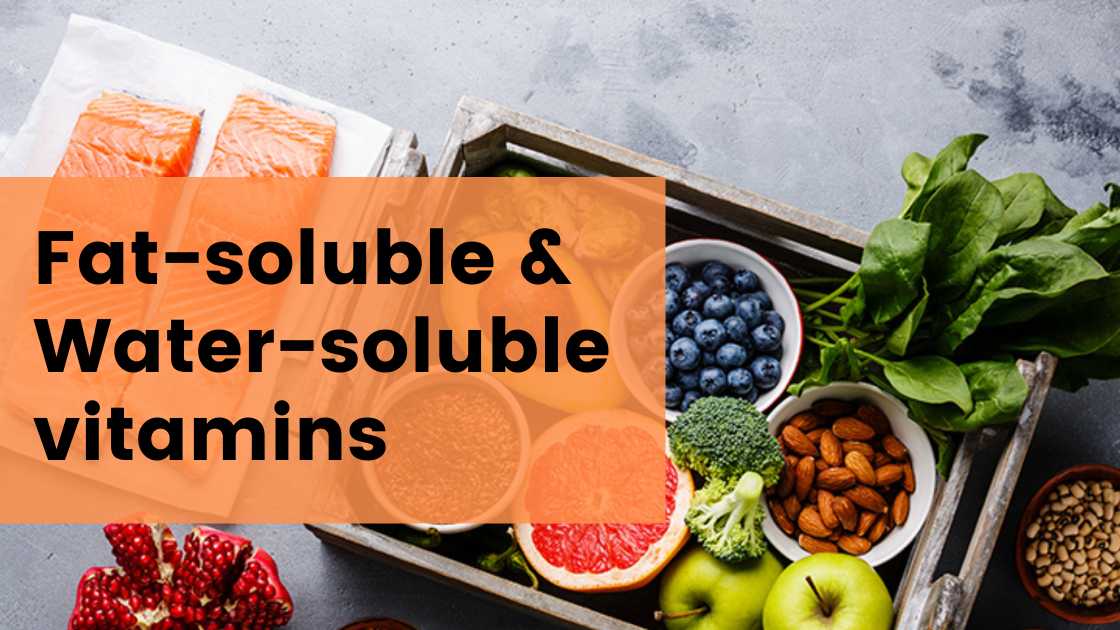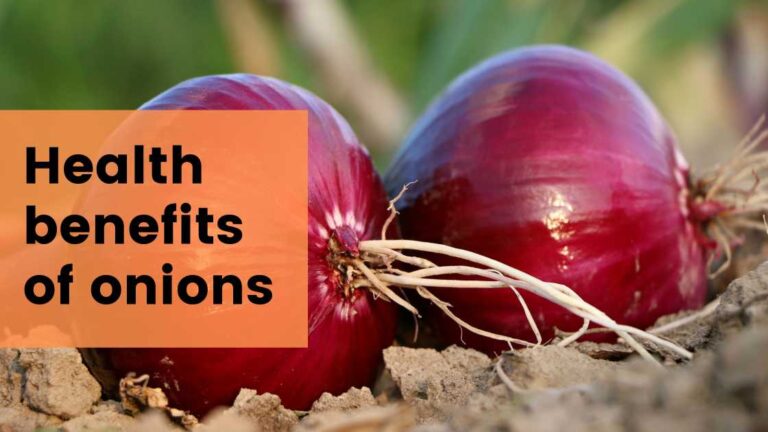The two main types of vitamins are fat-soluble and water-soluble vitamins. The type of vitamin has an impact on how it is absorbed in the body and how it is also stored or utilized in the body.
Vitamins are essential to the development of any individual and must be consumed either as part of your diet or taken as a supplement because of the essential roles they play in the body. To fully appreciate the roles of vitamins in the body and what each vitamin is used for, read the introductory piece on Vitamins, and everything you need to know about them.
What are fat-soluble vitamins
Fat-soluble vitamins as the name suggests are vitamins that are soluble in fat and are stored in the body’s tissues (normal liver and fatty tissues) and hence do not need constant replenishing. In the presence of dietary fat, their absorption is easier.
They are four in number and include vitamin A, vitamin D, vitamin E, and vitamin K (the easiest way to remember them is to use the acronym ADEK).
What are water-soluble vitamins
Water-soluble vitamins as the name suggest are soluble in water and are easily absorbed by the gut. Unlike the fat-soluble vitamins, they are not stored in the body hence there is the need for a constant supply of these vitamins from your diet to prevent a shortage in the body.
Usually, with these vitamins, the body uses what it needs and the kidney flushes out the excess through urine. Vitamin B12 is the only water-soluble vitamin that can be stored in the liver for many years. There are nine water-soluble vitamins; vitamins C, vitamin B1, vitamin B2, vitamin B3, vitamin B5, vitamin B6, vitamin B7, vitamin B9, and vitamin B12.
Food Sources, functions and deficiency of vitamins
Fat-soluble Vitamins
VITAMIN A (Retinol)
Food sources of vitamin A:
Yellow, red, and green leafy vegetables, egg yolk, dairy products (cheese, yogurt, butter, and cream), liver, beef, and oily fish.
Functions of vitamin A:
Essential for eye health, boosting the immune system and keeping the skin and the lining of some parts of the body healthy.
Deficiency of vitamin A
Night blindness and keratomalacia, which cause the clear front layer of the eye to grow dry and cloudy.
Overdose of vitamin A
Having more than 1.5mg of vitamin A a day over many years can affect your bones putting you at a higher risk of osteoporosis. Pregnant women should avoid taking vitamin A supplements unless advised by their doctors as it can harm the unborn baby.
VITAMIN D (Ergocalciferol, Cholecalciferol)
Food Sources of vitamin D
Vitamin D can be gotten from Fish (fatty fish such as salmon, mackerel, herring), Fish liver oils (cod liver oil), Fortified cereals, dairy products (cheese, yogurt, butter, and cream).
Functions of vitamin D:
It aids in calcium absorption thus helping information and maintenance of strong bones. It also helps to regulate the amount of calcium and phosphate in the body. Vitamin D can be synthesized by the body when exposed to sunlight.
Deficiency of vitamin D:
Rickets and osteomalacia (softening of the bones).
Overdose of vitamin D:
Taking more than 100 micrograms (4000 IU) of vitamin D a day can cause hypercalcemia, thereby weakening the bones and causing damage to the kidneys and heart. The recommended dose is 10 micrograms a day.
VITAMIN E (Tocopherol, Tocotrienol)
Food sources of vitamins E:
Avocado, Dark green vegetables (spinach, broccoli, asparagus, and turnip greens), Margarine (made from safflower, corn, and sunflower oil), Oils (rapeseed, safflower, corn, and sunflower), papaya and mango, seeds, and nuts.
Functions of vitamins E:
It functions as an antioxidant helping to prevent oxidative stress, therefore, protecting cells from damage caused by free radicals. It maintains healthy skin, eyes and boosts the immune system.
Deficiency of vitamins E:
This is rare, but it may cause hemolytic anemia in newborns. This condition destroys blood cells. It can also result in a loss of sense of feeling in the arms and legs, muscle weakness, and an inability to control body movements.
Overdose of vitamins E:
An excess amount of vitamin E is stored immediately for future use. There is not enough evidence to show the effects of an overdose of vitamin E. The recommended doses are 4mg a day for men and 3mg a day for women. However, taking up to 540mg (800 IU) is unlikely to cause any harm.
VITAMIN K (Phylloquinone, Menaquinone)
Food sources of vitamin K:
Cabbage, Cauliflower, Cereals, Dark green vegetables (broccoli, Brussels sprouts, and asparagus), Dark leafy vegetables (spinach, kale, collards, and turnip greens). Small amounts can be found in fish, liver, meat, and eggs.
Functions of vitamin K:
It is necessary for blood clotting and wound healing. It also supports the maintenance of strong bones.
Deficiency of vitamin K:
Low levels may cause an unusual susceptibility to bleed and also reduce bone strength hence osteoporosis.
Overdose of vitamin K:
There is not enough evidence to show the effects of an overdose of vitamin K. However, 1 microgram per kilogram body weight is recommended for adults not exceeding 1mg a day.
Water-soluble vitamins
Vitamin B9 (Folic acid, Folate)
Food sources of vitamin B9
Broccoli, Dried beans, Fortified cereals, Green leafy vegetables (spinach and romaine lettuce), Lentils, Oranges and orange juice, Peanut butter, Wheat germ. Also, several fruits have moderate amounts.
Functions of vitamin B9:
The synthetic form of folate is folic acid. Folate is essential for making DNA and RNA. It also helps the body to produce healthy red blood cells and is further needed for cell division.
Deficiency of vitamin B9:
During pregnancy, deficiency of this can lead to a higher probability of having a premature or low birth weight baby. It also greatly affects the fetus’s nervous system.
Megaloblastic anemia (a blood disorder that causes weakness, fatigue, trouble concentrating, irritability, headache, heart palpitations, and shortness of breath) can also result. In addition, open sores on the tongue and inside the mouth as well as changes in the color of the skin, hair, or fingernails are all typical of folate deficiency.
VITAMIN B3 (Niacin)
Food sources of vitamin B3:
Avocado, Eggs, Enriched bread and fortified cereals, Fish (tuna and salt-water fish), Lean meats, Legumes, Nuts, Potato, Poultry, tomatoes
Functions of vitamin B3:
It helps in the proper functioning and maintenance of skin, nervous and digestive systems. The body also uses niacin for the production of energy from food.
Deficiency of vitamin B3:
Changes in skin (hyperpigmentation and dermatitis of the skin), nervous system (dementia), and gastrointestinal tract (intestinal upset).
VITAMIN B5 (Pantothenic acid)
Food sources of vitamin B5:
Avocado, Broccoli, kale, and other vegetables in the cabbage family, Eggs, Legumes and lentils, Milk, Mushroom, Organ meats, Poultry, White and sweet potatoes, Whole-grain cereals
Functions of vitamin B5:
For hormone and energy production.
Deficiency of vitamin B5:
Symptoms of deficiency include paresthesia (pins and needles) in the arms, hands, and feet. Due to the availability of this vitamin in almost every food, however, deficiency is very rare.
VITAMIN B1 (Thiamine)
Food sources of vitamin B1
Dried milk, Egg, Enriched bread and flour, Lean meats, Legumes (dried beans), Nuts and seeds, Organ meats, Peas, Whole grains
Functions of vitamin B1
It helps in the production of various enzymes that help break down blood sugar.
Deficiency of vitamin B1
Beriberi and Wernicke-Korsakoff syndrome.
VITAMIN B2 (Riboflavin)
Food sources of vitamin B2:
Asparagus, bananas, okra, chard, cottage cheese, milk, yogurt, meat, eggs, fish, and green beans.
Functions of vitamin B2:
It helps in food metabolism and enhances the growth and development of body cells.
Deficiency of vitamin B2
Inflammation of the lips and fissures in the mouth.
VITAMIN B6 (Pyridoxine)
Food sources of vitamin B6
Avocado, Banana, Legumes (dried beans), Meat, Nuts, Poultry, Whole grains (milling and processing removes a lot of this vitamin)
Functions of vitamin B6
It is necessary for the formation of red blood cells.
Deficiency of vitamin B6:
This may lead to anemia and peripheral neuropathy.
VITAMIN B12 (Cyanocobalamin)
Food sources of vitamin B12:
Meat, Eggs, Fortified foods such as soymilk, Milk and milk products, Organ meats (liver and kidney), Poultry, Shellfish
Functions of vitamin B12:
It helps in the maintenance of a healthy nervous system.
Deficiency of vitamin B12
Some neurological problems and types of anemia might result.
VITAMIN C (Ascorbic acid)
Food sources of vitamin C:
Broccoli, Brussels sprouts, Cabbage, Cauliflower, Citrus fruits, Potatoes, Spinach, Strawberries, Tomatoes and tomato juice. Cooking destroys vitamin C.
Functions of vitamin C :
It is necessary for collagen production, wound healing, and bone formation. Vitamin C also strengthens blood vessels, supports the immune system, helps the body absorb iron, and acts as an antioxidant.
Deficiency of vitamin C:
Scurvy (leads to bleeding gums, loss of teeth, poor tissue growth, and poor wound healing).
VITAMIN B7 (Biotin)
Food sources of vitamin B7 (Biotin)
Egg yolk, liver, broccoli, spinach, and cheese.
Functions of vitamin B7 (Biotin)
It is an essential part of keratin; a structural protein in the skin, hair, and nails. It also helps the body to metabolize proteins, fats, and carbohydrates.
Deficiency of vitamin B7 (Biotin):
Dermatitis or inflammation of the intestines.






2 Comments